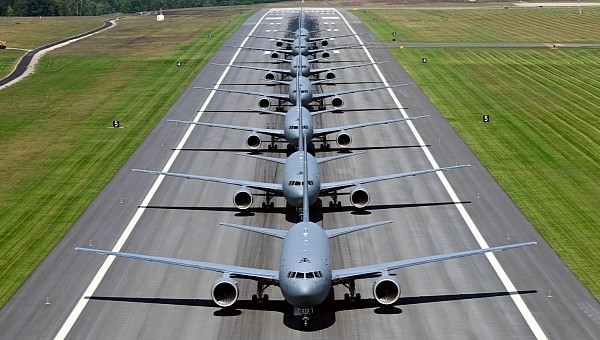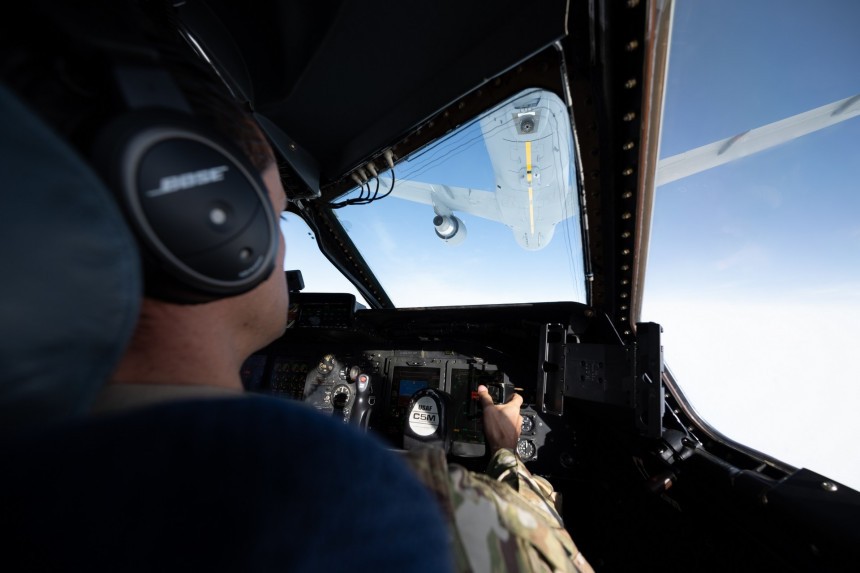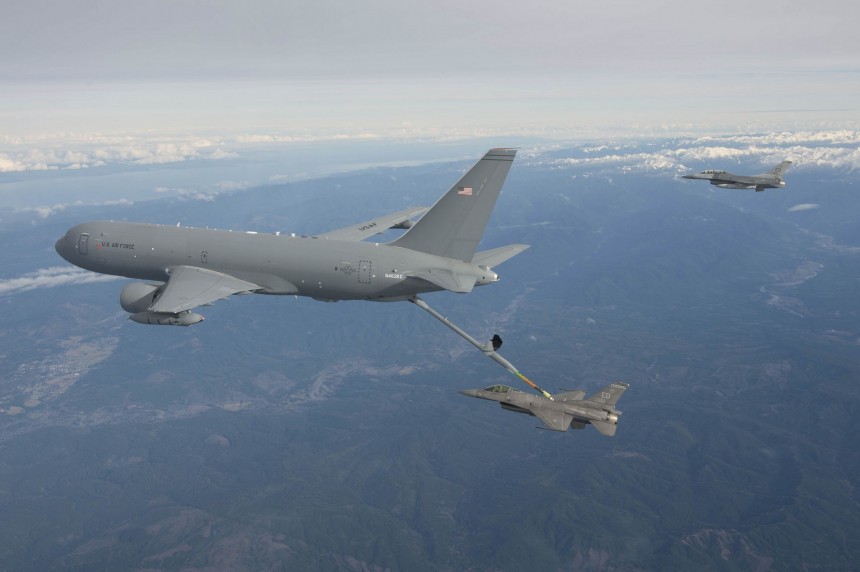The U.S. Air Force expands its 68-strong Pegasus tanker aircraft fleet with a $2.3-billion contract for an additional lot of 15 KC-46A flying “gas pumps.” At a hefty $153 million apiece, the new Boeing airplanes are part of the 128-unit contract with the world’s no. one airpower.
Separately, ten tankers are ordered by the Japanese and Israeli air forces, with six going to the Asian country and the remaining four allotted to the middle east ally. Although it’s best known for its aerial refueling role, the KC-46A is a versatile cargo and troops carrier and can also serve as a medical transporter.
The tanker was deemed combat-ready by the U.S. Air Force Air Mobility Command in September of last year, extending the range of missions that the aircraft can perform. A little over a month ago, on December 17-18, two KC-46As completed the first operational long-endurance for this type of warbird. Forty-two hours, from Kansas to Guam and back, with a short ground stop in the Pacific territory for regular service.
Last year, the Pegasus air tankers performed exceptionally well, according to the military, which claims a 97% mission-capable success rate for the deployment exercises involving the KC-46A. The planes flew over Europe, the Middle East, and the Indo-Pacific region.
Boeing assembles these around-the-globe-capable airplanes in the largest building on the planet – the Everett, Washington facility, using the 767 production line. Built specifically for aerial refueling and airlift, the Pegasus first flew in December 2014 after three years of development.
The KC-46A can assist most fixed-wing aircraft with range-extending mid-air refueling missions thanks to its combined boom, hose-and-drogue, and WARP (Wing Aerial Refueling Pods) delivery systems. Combined, these features enable the airplane to undertake multi-point simultaneous aerial refueling tasks. In plain average Joe parlance, the giant can fill the tanks of several airplanes at once.
Each of the Pegasus’ fuel offloading systems is independent of the others, with the Boom Operator controlling the boom, centerline drogue, and WARPs simultaneously. The Air Refueling Operator station provides permanent wingtip-to-wingtip monitoring.
The massive warplane can carry up to 65,000 lbs (nearly 30 tons) of cargo – a total of eighteen 122-gallon (463-liter) pallets – along with 213,000 lbs of fuel (96 tons) and 58 passengers. The Pegasus’ takeoff weight is a hefty 415,000 lbs (188 tons) at full load.
The combined thrust of 124,000 lbf of the two Pratt & Whitney 4062 high-bypass turbofan jet engines doesn’t look like overkill, keeping in mind the figures in the paragraph above. The 159-foot-long behemoth (48.5 meters) has a wingspan of 156 feet (47.5 meters) and stands almost 52 feet tall (15.5 meters).
A crew of up to fifteen (including the standard five aeromedical evacuation crew) can take position inside the KC-46A air tankers. The MedEvac team (which regularly consists of two nurses and three medical technicians) can be reconfigured as needed, depending on the number of patients.
The tanker was deemed combat-ready by the U.S. Air Force Air Mobility Command in September of last year, extending the range of missions that the aircraft can perform. A little over a month ago, on December 17-18, two KC-46As completed the first operational long-endurance for this type of warbird. Forty-two hours, from Kansas to Guam and back, with a short ground stop in the Pacific territory for regular service.
Last year, the Pegasus air tankers performed exceptionally well, according to the military, which claims a 97% mission-capable success rate for the deployment exercises involving the KC-46A. The planes flew over Europe, the Middle East, and the Indo-Pacific region.
The KC-46A can assist most fixed-wing aircraft with range-extending mid-air refueling missions thanks to its combined boom, hose-and-drogue, and WARP (Wing Aerial Refueling Pods) delivery systems. Combined, these features enable the airplane to undertake multi-point simultaneous aerial refueling tasks. In plain average Joe parlance, the giant can fill the tanks of several airplanes at once.
Each of the Pegasus’ fuel offloading systems is independent of the others, with the Boom Operator controlling the boom, centerline drogue, and WARPs simultaneously. The Air Refueling Operator station provides permanent wingtip-to-wingtip monitoring.
The combined thrust of 124,000 lbf of the two Pratt & Whitney 4062 high-bypass turbofan jet engines doesn’t look like overkill, keeping in mind the figures in the paragraph above. The 159-foot-long behemoth (48.5 meters) has a wingspan of 156 feet (47.5 meters) and stands almost 52 feet tall (15.5 meters).
A crew of up to fifteen (including the standard five aeromedical evacuation crew) can take position inside the KC-46A air tankers. The MedEvac team (which regularly consists of two nurses and three medical technicians) can be reconfigured as needed, depending on the number of patients.











